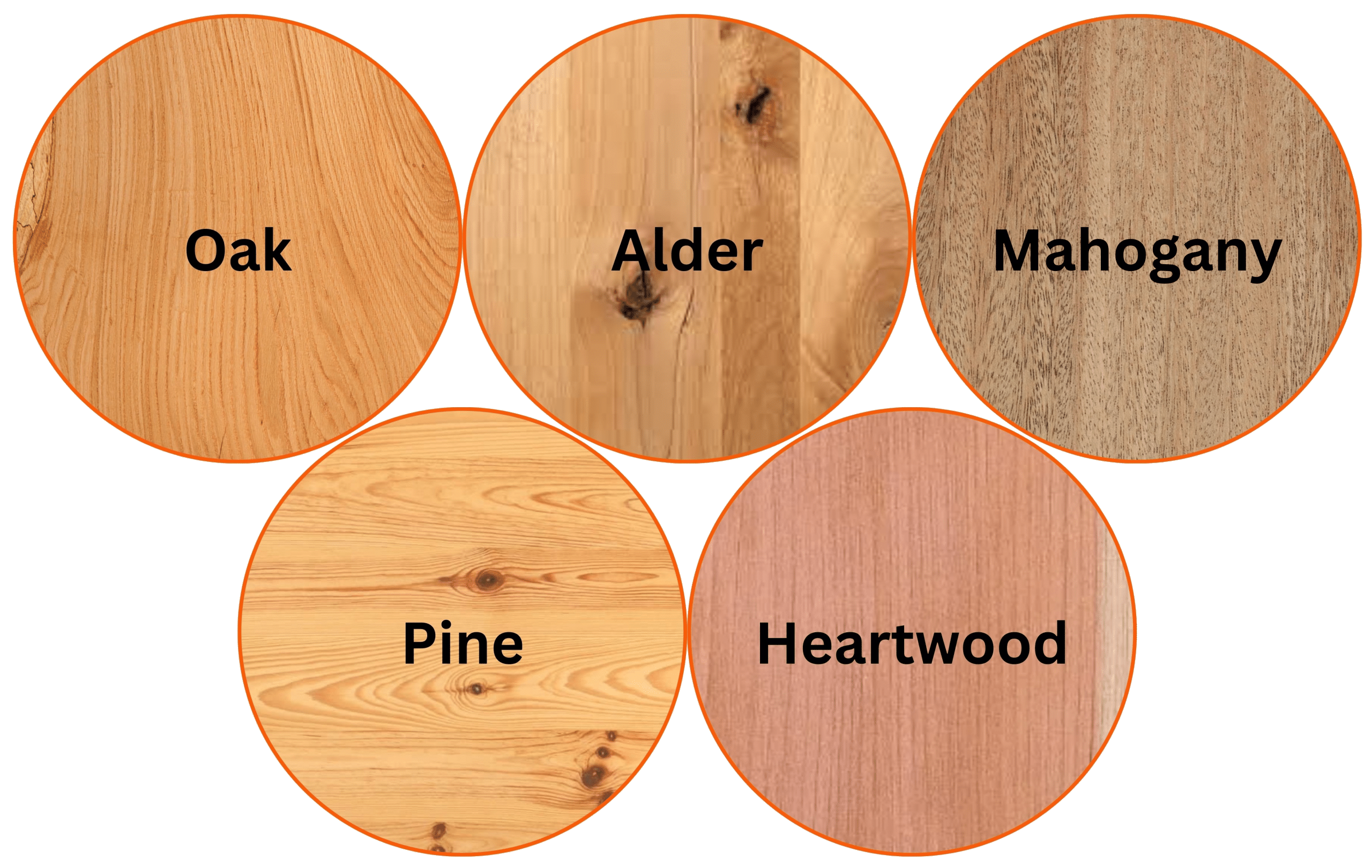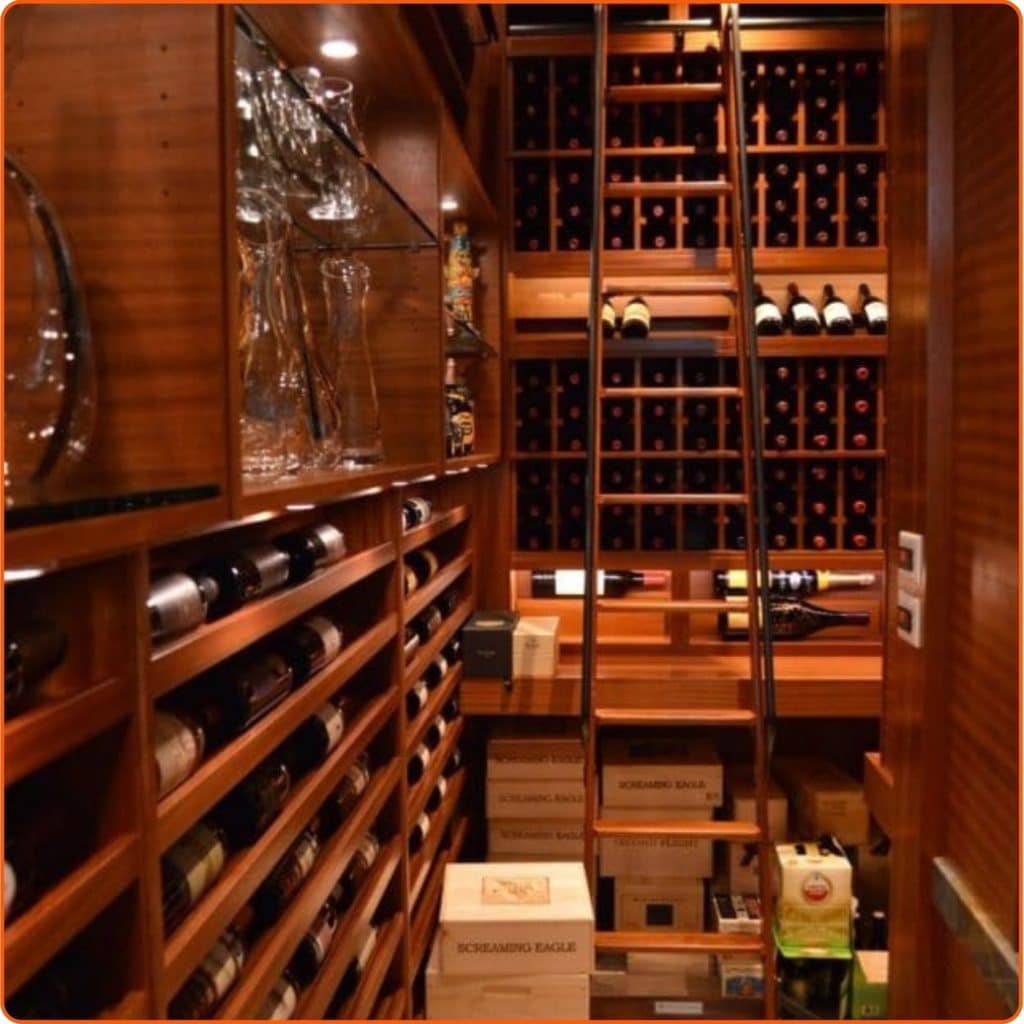
Are you in the process of building your home or restaurant wine cellar and looking for the best type of wood to build your custom wine racks with? Like everybody who invests in wine cellars, we’re positive you’re here looking to find the best recommendations for your wine cellar style and budget.
Wooden wine racks are traditional yet timeless. Add them to your rustic wine cellar or contemporary wine room, and you’re sure to have a classy, fascinating, and functional display at the same time. However, with so many varieties of hardwood in the market, how can you decide which type of wood would serve your wine rack plans best?
In this article, let’s explore the benefits of using wood. Learn about wood’s durability, and discuss the different types you can use for your wine rack. Additionally, we’ve included some pointers on choosing the right type of wood for your wine racking based on our years of experience building and customizing wine cellars around the country!
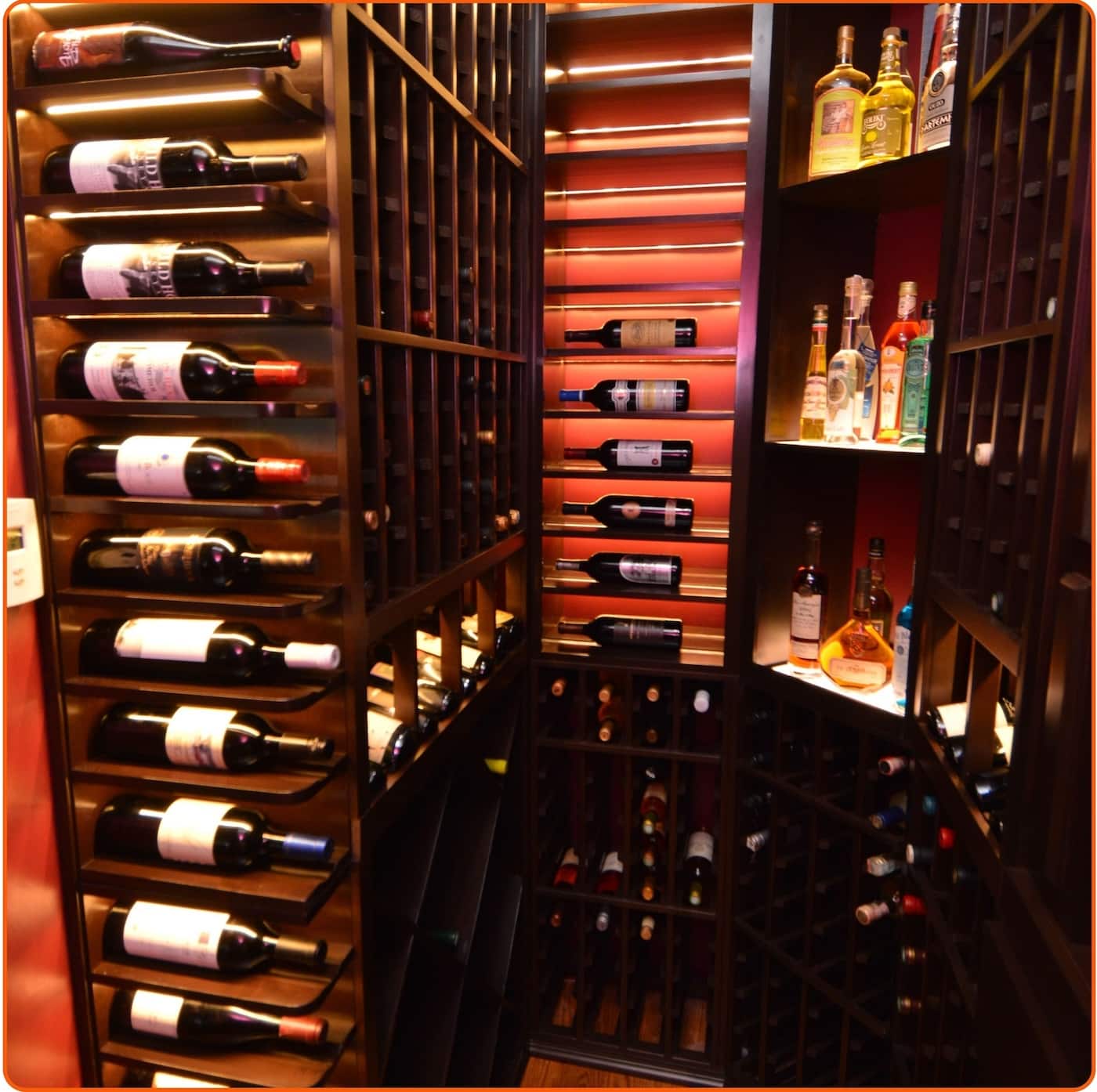
Benefits of Wood as Wine Racking
Wood is the most popular material for wine racks, as it has been used for centuries. Historically, it has been the choice for crafting furniture, including wine storage racks; it wasn’t only until years later that metal wine racks started to emerge.
While metal provides custom wine racks with a sleek, updated look and makes them easier to clean, there are also notable advantages of using wood as racking:
- Insulation Capabilities. Wood naturally contains air pockets at the cellular level. Some types, especially engineered wood like laminated veneer lumber (LVL), require less energy to cool, which helps maintain your wine cellar’s temperature.
- Humidity Control. The porosity of wood (which differs per type) can help regulate your wine room’s humidity.
- Acoustic Control. Wood possesses sound-altering properties that can help regulate vibrations inside a wine cellar.
- Timeless and Versatile. The look of wood can satisfy both traditionalists and modernists. Whether you’re planning for a minimalist or eclectic wine cellar style, wood allows you to achieve any look you desire in any-sized wine cellar small or big.
- Alterable. There are more customization opportunities with wood. You can modify them through painting, sanding, staining, and more to make your wine rack fit with the changing style of your wine cellar.
- Durable. Wooden wine racks are usually made from hardwood, which comes from slow-growing trees. This growth profile makes them dense, strong, and highly durable for wine cellar furniture.
Does Wood Really Last for Custom Wine Racks?
Wood may seem fragile, but some types are way stronger than others. If you’re like many homeowners or business owners who want to ensure their investment is used wisely, using wood as wine racks will not disappoint.
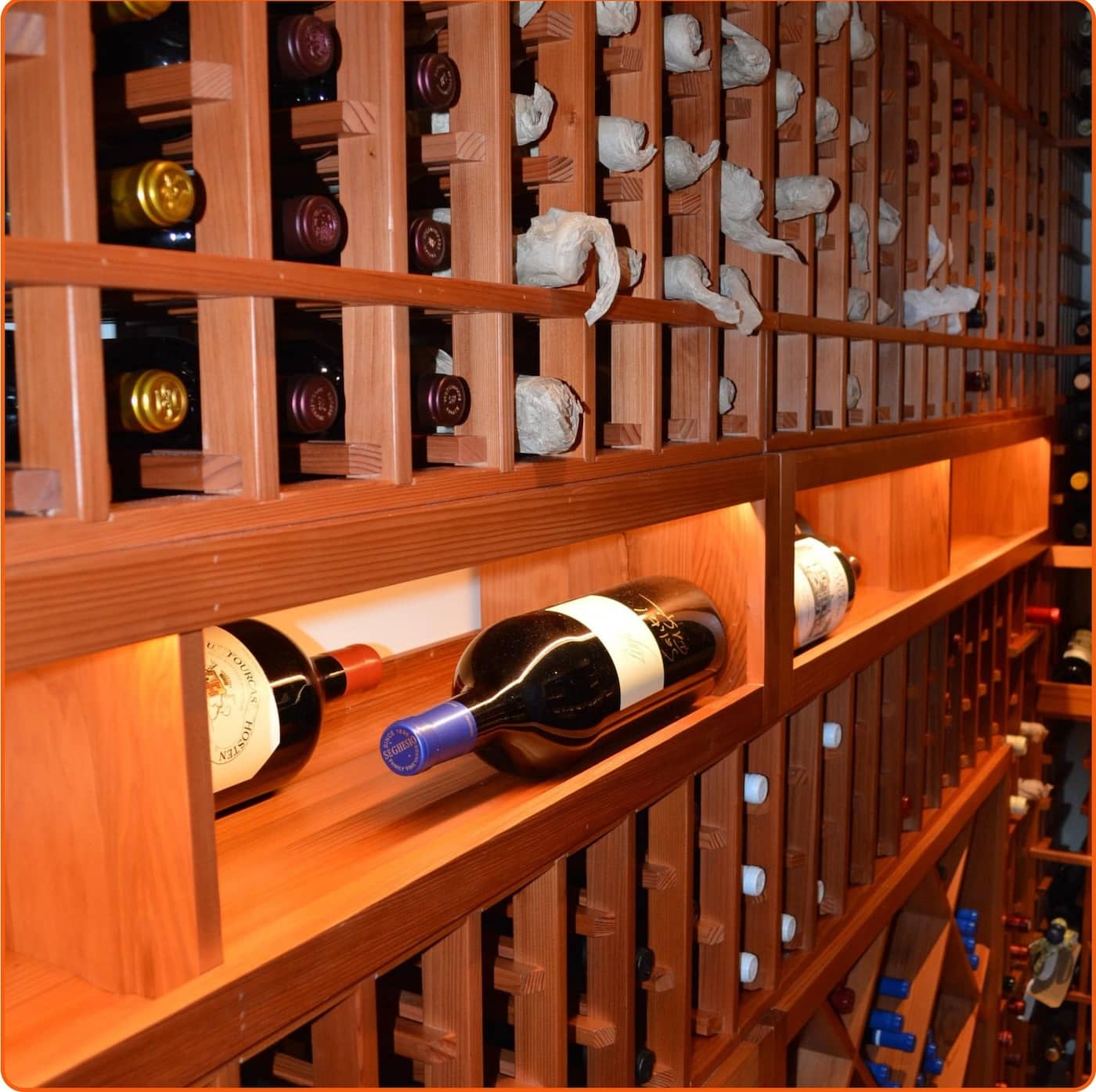
Wood is made up of long, strong cells that warrant its structural endurance. If a hardwood tree can survive harsh weather and natural disasters like typhoons, it can indeed last a lifetime inside your climate-controlled wine cellar.
Like metal, wood can last long if handled and processed correctly. That is why it is also important to choose wood of excellent quality when buying from your supplier.
5 Varieties of Wood to Use in Wine Cellars
- Mahogany. Mahogany is a highly durable timber with closely packed grains, giving it its smooth texture. It also has excellent stability and does not shrink or expand much with time compared to other types. Furthermore, the combination of Mahogany’s natural color and grains makes it look sophisticated, making it one of the most popular hardwood types for expensive furniture.
- Heart Redwood . Redwood lumber is sourced from the tallest tree on earth, the Sequoia. Featuring tightly packed rings, a rich red-brown color, and a few knots here and there, this type of wood is very popular for outdoor furniture. It can withstand drastically changing weather and the controlled conditions inside a wine cellar. Redwood also stains really well without damaging the cells and does not scratch easily, making your display storage look beautiful for a long time. Check out this wine cellar in Presidio Heights featuring redwood wine racks!
- Pine. When you’re going for a light, clean aesthetic, pinewood is an excellent choice. It also comes in a pale color with beautiful grains and knots. While it’s true that pine is usually relatively cheaper than other types of lumber, the price doesn’t discount its high quality. Like redwood, pine’s straight grains make it easy to paint. You can customize the color and shade to fit your wine cellar’s theme without compromising quality.
- Alderwood. Alderwood also boasts a naturally light color with a uniform, fine-grain texture. Compared to other hardwoods, Alderwood is softer, but it is still durable enough to withstand wear and tear, especially inside a climate-controlled wine room. If you’re looking for some wood with plenty of character, check out Knotty Alderwood and explore different stains.
-
Wood, from afar, may look similar, but look closely and you’ll see how different they are. Oak. Oakwood has that distinct, almost golden-brown look. It has a widespread use due to its longevity.
How to Choose the Type of Wood for Your Wine Cellar Rack
The five types of wood mentioned here are just some of your many options. As you research more, you’ll learn about more types of wood that can potentially do great for racking, like cherry, walnut, maple, and more — and it can be staggering. It is essential to identify factors to help you choose the best type of wood for your project.
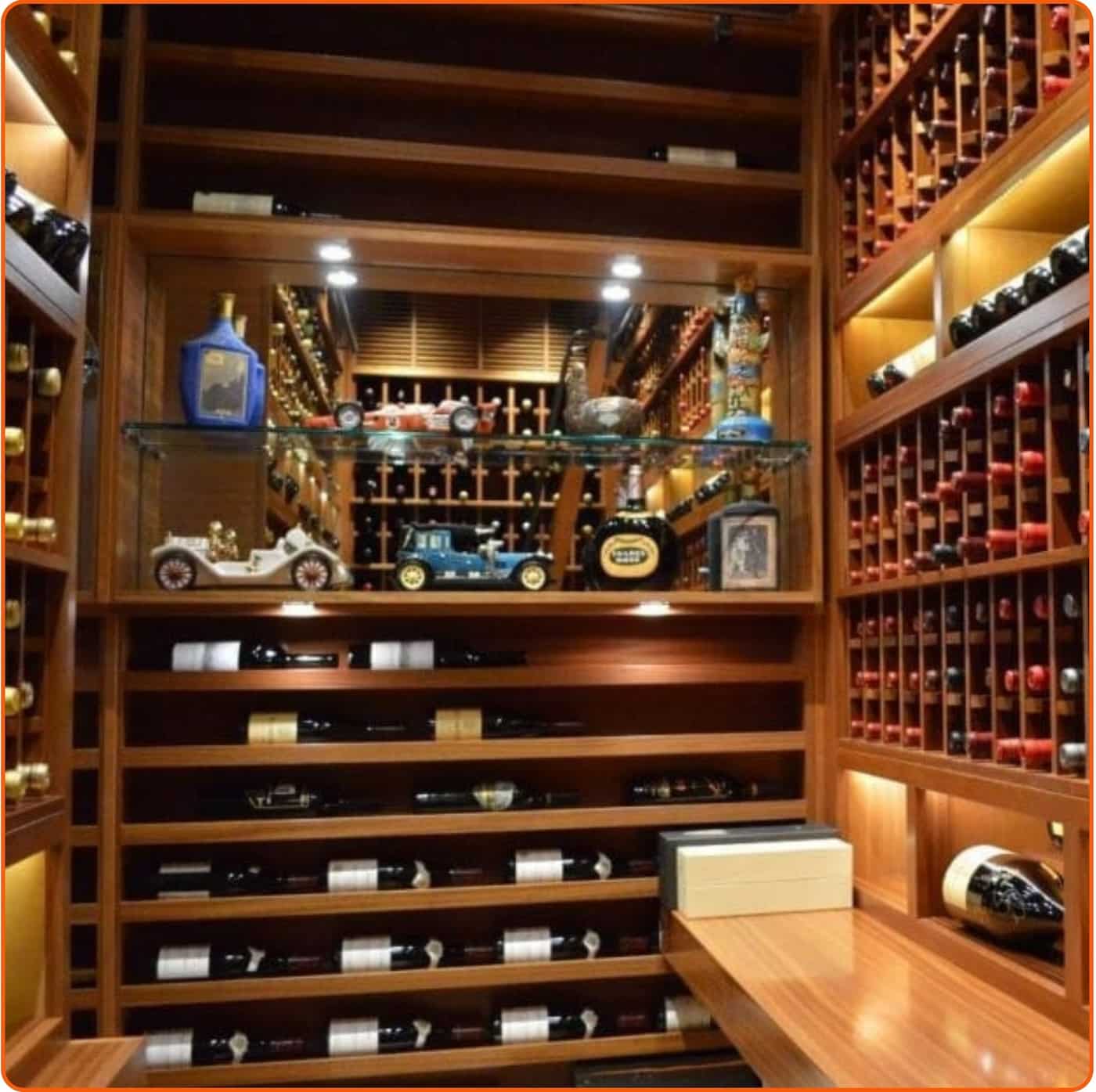
- Determine Your Wine Cellar’s Style. Hardwoods with darker shades can fit traditional wine cellars best, while lighter-colored woods such as pine can look exceptional in transitional and modern wine rooms.
- Set Your Budget. Some hardwoods are more abundant than others, and this affects their price. For example, since Mahogany is a slow-growing tree compared to Pine, Mahogany is more expensive.
- Consider the Grain Texture . Finer grains offer smoother textures than coarse grains. This is important to consider when you plan on staining/painting your custom wine racks. Painting on fine-grained wood results in a cleaner, more consistent look. On the other hand, using coarse-grained wood enhances the rustic or old-world look of your wine cellar.
- Identify the Number of Bottles. Different hardwoods have different softness/hardness indices. While all hardwoods are stable and durable, some can last longer than others. If you’re holding thousands of bottles in your traditional wine cellar, we recommend going for the most solid hardwood varieties like Mahogany.
Get Expert Assistance for Your Custom Wine Racking
As wine cellar racks are part of a substantial investment, we suggest taking all the time you need when selecting the best wood type for your wooden custom wine racks. Settling for whatever is available can impact your wines and wine cellar in the long run.
Professionals like Custom Wine Cellars San Francisco can help you make the best out of your budget through quality custom wine racks that fit your vision.
You can contact our designers at +1 (415) 508 – 8419 and take that stress off your mind for some surprising designs!




